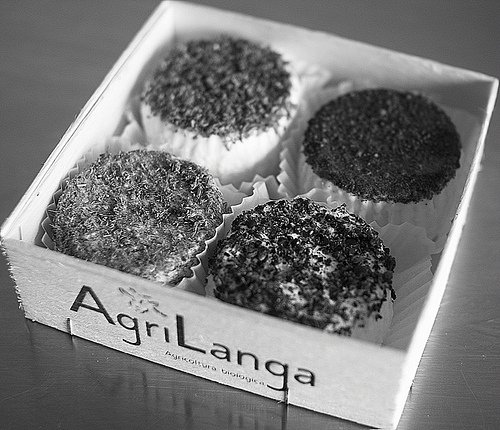In order to arrive at the Agrilanga farm, my guide Filippo had to ask for directions from some of the locals since it was somewhat difficult to find. However, after having found the guesthouse, we were met by Massimo Trinchero, the man who’s responsible for raising their goats and making goat’s cheese. After a short walk we arrived at a building where one part is used for the dairy, the middle is used for milking the goats, while the rest houses the goats. By means of some plumbing, after having finished the milking of the goats, the milk is transferred to the dairy such that it can be turned into cheese more or less immediately.
Since a property of about 50 hectares surrounding the stable where the goats are residing, they can graze freely outside for about 9 months yearly, while they are fed locally grown hay for the remaining 3 months of the year. Since this is an organic farm, the cultivation of hay also has to follow certain rules. In addition to having access to first-class food, the goats are treated as well as possible since the quality of the milk depends on that they have a good life.
Being located in the southern part of Piemonte, the local climate is strongly influenced by the nearby sea leading to a normally abundant precipitation. This leads to that the meadows surrounding the farm are fertile and that they contain lots of aromatic herbs, which after having been eaten by the goats, will certainly influence the taste of their milk.
Cheeses, two of whose generic name is Robiola di Roccaverano, are made at the dairy of Agrilanga. In fact, six types of cheese are made:
- Fresh Robiola di Roccaverano PDO (Protected Designation of Origin)
- Mature Robiola di Roccaverano PDO
- Langhetta
- Fresh goat’s cheese
- Goat’s cheese with herbs
- Goat’s cheese with vegetable carbon
The Robiola di Roccaverano cheeses are known from before the Roman conquest of present Italy, and they have been described by the illustrious Roman author Pliny the elder. The name Robiola derives from the Latin word “robium” referring to the reddish surface of the cheese, while Roccaverano is the place from which the cheese originates. One of the rules which has to be followed states that the cheese has to contain at least 50% goat’s milk, while the rest can also be cow’s or sheep’s milk.
The taste of the cheeses vary with the seasons in accordance with what the goats are eating. In spring and early summer, the fragrances are dominated by fresh grass, cherry and hazel. At the end of summer, some of the goats will enter pregnancy and start producing less milk. However, their milk will contain more fat and the cheeses will be at their most fragrant.
Besides the Agrilanga farm, there is a consortium consisting of 19 small-scale producers making the Robiola di Roccaverano a product with many contributors.
After having founded this farm in the middle of the 90s, about 15 years later the owner had the great satisfaction of selling lots of his products in a place called Grasse in France being considered the fatherland of goat’s cheese. The cheeses from this farm are also exported to Germany.

